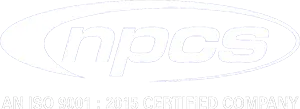Information
Activated Carbon - Manufacturing Plant, Detailed Project Report, Profile, Business plan, Industry Trends, Market research, survey, Manufacturing Process, Machinery, Raw Materials, Feasibility study, Investment opportunities, Cost and Revenue
Activated Carbon is a unique material because of the way it is filled with holes (voids, spaces, sites, pores,) whatever the size of molecules. It is that, although they are spaces of zero electron density, these pores possess intense vander wall forces (from the near proximity of carbon atoms).
Activated carbon is a non-graphitic form of carbon, which could be produced by activation of any carbonaceous material such as coconut shells, bamboo, wood chips, sawdust, coal, lignite, paddy husk etc. The process of activation is carried out in two stages. The raw material is first carbonized and then activated either by chemicals or by steam to derive the highly porous structure. Shell-based activated carbon is extensively used in the process of refining and bleaching of vegetable oils and chemical solutions, water purification, recovery of solvents, recovery of gold, in gas masks for protection against toxic gases, in filters for providing adequate protection against war gases/nuclear fall outs, etc.
Uses and Application
A wide variety of activated carbon products are available exhibiting markedly different characteristics depending upon the raw material and activation of technique used in their production. In selecting the activated carbon it is important to have a clear understanding of both the adsorptive and physical characteristics of the material in order to optimize the performance capabilities.
Activated Carbon of three grades namely powder, granular and pelletlized finds hundreds of different applications. By chemical activation, predominantly powder activated carbons are made and these qualities are mostly used for wastewater treatment. Granular products and pellets used for gas purification are predominantly made by gas steam activation. To cite some examples from the numerous applications: decolorization of sugar and sweeteners, drinking water treatment, gold recovery, production of pharmaceuticals and fine chemicals, catalytic process, off gas treatment of waste incinerators, automotive vapor filters, color/odor correction in wines and fruit juices.
Market Survey
The global activated carbon market was worth $1.8 billion in 2011 and is estimated to reach $3 billion by 2016, growing at a CAGR of 11.1% from 2011 to 2016. The powdered and granular activated carbon segments are the key revenue generators for the activated carbon market.
The demand for activated carbon (AC) is expected to grow due to the new demand in mercury control technology for industrial air purification applications.
See more: http://goo.gl/KBB91S
http://www.entrepreneurindia.co/
1. District Profile & Geotechnical Site Characterization
1.1. General
1.2. Physical Characteristics
1.3. Map
1.4. Climate & Rainfall
1.5. Economy & Industry
1.6. Transportation & Communications
2. Introduction
2.1. Decoloring Carbons
2.2. Gas Absorbent Carbons
2.3. Metal Absorbent Chars
2.4. Medicinal Carbons
3. Uses and Application
3.1. Field of Application
4. Grades of Activated Carbon
5. Properties
5.1. Physical Properties
5.2. Chemical Properties
6. Usage of Activated Carbon
6.1. Edible Oil Industry
6.2. Pharmaceutical Industry
6.3. Beverage Industry
6.4. Other Industries
7. B.I.S. Specifications
7.1. IS: 877 - 1977 Method of Sampling & Tests for Activated Carbons, Powdered & Granular
7.2. IS: 2752 – 1978 Activated Carbons (Granular).
7.3. IS: 8366 – 1977 Activated Carbon Powdered.
8. Different Types of Activated Carbon
9. Market Survey
9.1. Present Manufacturing Capacity in India
9.2. Growing Demand in India
9.3. Indian Firms On Expansion Mode
9.4. Global Demand:
10. Financials & Comparison of Major Indian Players/Companies
10.1. Section – I
10.1.1. Name Of Company With Contact Details
10.1.2. Name Of Director(S)
10.1.3. Plant Capacity
10.1.4. Location Of Plant
10.1.5. Capital Expenditure Projects
10.1.6. Name Of Raw Material(S) Consumed With Quantity & Cost
10.2. Section – II
10.2.1. Income & Expenses
10.2.2. Profits
10.2.3. Forex Transaction
10.2.4. Liabilities
10.2.5. Assets
10.2.6. Growth In Assets & Liabilities
10.2.7. Growth In Income & Expenditure
10.2.8. Liquidity Ratios
10.2.9. Profitability Ratio
10.2.10.Return Ratios
10.2.11.Cost As % Ge Of Sales
10.2.12.Working Capital & Turnover Ratios
10.2.13.Structure Of Assets & Liabilities(%)
10.2.14.Cash Flow
11. Export Statistics Data of India
11.1. Export Statistics Data for Coconut Shell Based Activated Carbon
12. Present Manufacturers
13. Manufacturing Process
14. Process Flow Diagram
15. Buyers
15.1. Name of Company with Contact Details
15.2. Name of Director(S)
15.3. Plant Capacity
15.4. Location of Plant
15.5. Capital Expenditure Projects
15.6. Name Of Raw Material(S) Consumed With Quantity & Cost
16. Suppliers of Raw Materials
16.1. Gunny Bag
16.2. Lab Chemicals
17. Suppliers of Plant & Machinery
17.1. Piping and Fittings
17.2. Maintenance Equipments
17.3. Laboratory Equipments
18. Plant Layout
19. Product & Machinery Photographs
20. Quotation of Plant, Machinery and Equipments from Supplier
PROJECT FINANCIAL
· Project at a Glance
Annexure
· Assumptions for Profitability workings ….…………………………………………....................... 1
· Plant Economics…………………………………………………………………………….................... 2
· Production Schedule……………………………………………………………………….................... 3
· Land & Building…………………………………………………………………………….................... 4
§ Factory Land & Building
§ Site Development Expenses
· Plant & Machinery………………………………………………………………………….................... 5
§ Indigenous Machineries
§ Other Machineries (Miscellaneous, Laboratory etc.)
· Other Fixed Assets………………………………………………………………………….................... 6
§ Furniture & Fixtures
§ Pre-operative and Preliminary Expenses
§ Technical Knowhow
§ Provision of Contingencies
· Working Capital Requirement Per Month………………………………………………................. 7
§ Raw Material
§ Packing Material
§ Lab & ETP Chemical Cost
§ Consumable Store
· Overheads Required Per Month and Per Annum ……………………………………................. .8
§ Utilities & Overheads (Power, Water and Fuel Expenses etc.)
§ Royalty and Other Charges
§ Selling and Distribution Expenses
· Salary and Wages ……………………………………………………………………………................. 9
· Turnover Per Annum ………………………………………………………………………................ 10
· Share Capital…………………………………………………………………………………................ 11
§ Equity Capital
§ Preference Share Capital
• Annexure 1 :: Cost of Project and Means of Finance
• Annexure 2 :: Profitability and Net Cash Accruals
§ Revenue/Income/Realisation
§ Expenses/Cost of Products/Services/Items
§ Gross Profit
§ Financial Charges
§ Total Cost of Sales
§ Net Profit After Taxes
§ Net Cash Accruals
• Annexure 3 :: Assessment of Working Capital requirements
§ Current Assets
§ Gross Working Capital
§ Current Liabilities
§ Net Working Capital
§ Working Note for Calculation of Work-in-process
• Annexure 4 :: Sources and Disposition of Funds
• Annexure 5 :: Projected Balance Sheets
§ ROI (Average of Fixed Assets)
§ RONW (Average of Share Capital)
§ ROI (Average of Total Assets)
• Annexure 6 :: Profitability ratios
§ D.S.C.R
§ Earnings Per Share (EPS)
§ Debt Equity Ratio
• Annexure 7 :: Break-Even Analysis
§ Variable Cost & Expenses
§ Semi-Variable/Semi-Fixed Expenses
§ Profit Volume Ratio (PVR)
§ Fixed Expenses / Cost
§ B.E.P
• Annexure 8 to 11 :: Sensitivity Analysis-Price/Volume
§ Resultant N.P.B.T
§ Resultant D.S.C.R
§ Resultant PV Ratio
§ Resultant DER
§ Resultant ROI
§ Resultant BEP
• Annexure 12 :: Shareholding Pattern and Stake Status
§ Equity Capital
§ Preference Share Capital
• Annexure 13 :: Quantitative Details-Output/Sales/Stocks
§ Determined Capacity P.A of Products/Services
§ Achievable Efficiency/Yield % of Products/Services/Items
§ Net Usable Load/Capacity of Products/Services/Items
§ Expected Sales/ Revenue/ Income of Products/ Services/ Items
• Annexure 14 :: Product wise domestic Sales Realisation
• Annexure 15 :: Total Raw Material Cost
• Annexure 16 :: Raw Material Cost per unit
• Annexure 17 :: Total Lab & ETP Chemical Cost
• Annexure 18 :: Consumables, Store etc.
• Annexure 19 :: Packing Material Cost
• Annexure 20 :: Packing Material Cost Per Unit
• Annexure 21 :: Employees Expenses
• Annexure 22 :: Fuel Expenses
• Annexure 23 :: Power/Electricity Expenses
• Annexure 24 :: Royalty & Other Charges
• Annexure 25 :: Repairs & Maintenance Expenses
• Annexure 26 :: Other Manufacturing Expenses
• Annexure 27 :: Administration Expenses
• Annexure 28 :: Selling Expenses
• Annexure 29 :: Depreciation Charges – as per Books (Total)
• Annexure 30 :: Depreciation Charges – as per Books (P & M)
• Annexure 31 :: Depreciation Charges - as per IT Act WDV (Total)
• Annexure 32 :: Depreciation Charges - as per IT Act WDV (P & M)
• Annexure 33 :: Interest and Repayment - Term Loans
• Annexure 34 :: Tax on Profits
• Annexure 35 :: Projected Pay-Back Period And IRR
X
Have a business idea? Let’s make it
happen together-contact us now!




